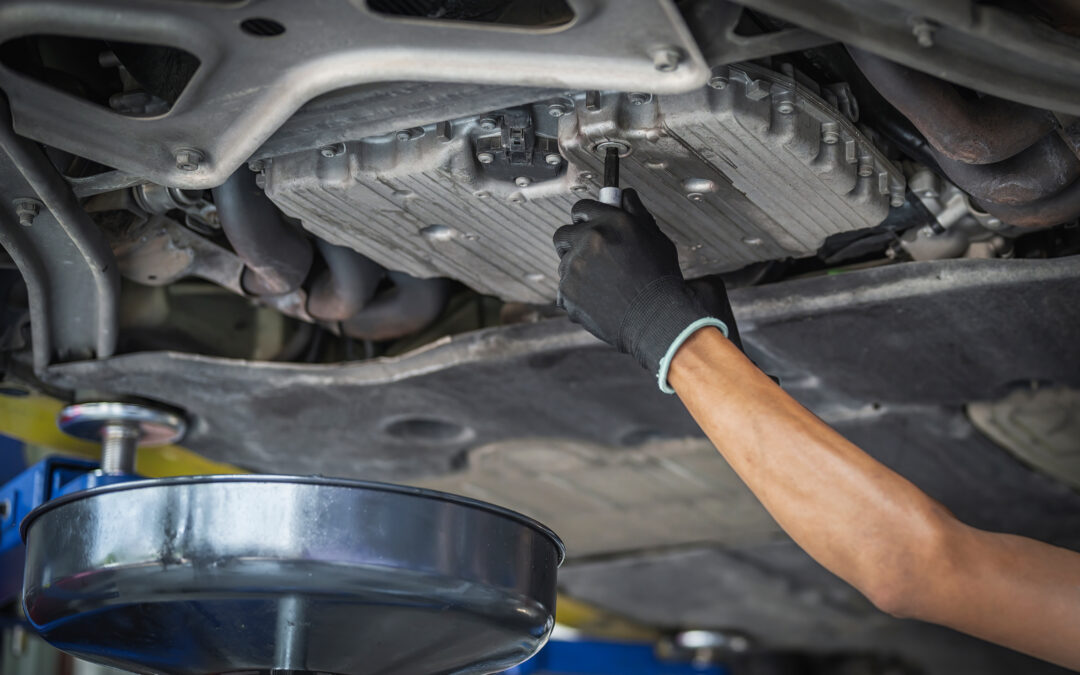Transmission issues can be a major source of stress for vehicle owners—especially when they stem from something as seemingly minor as a fluid leak. Left unchecked, a transmission fluid leak can escalate into serious mechanical damage and expensive repairs. In this month’s blog post, we walk through how to recognize the warning signs of a leak, explore the most common causes, and share tips to help you protect your transmission before trouble starts.
Understanding Transmission Fluid
Transmission fluid is the lifeblood of your vehicle’s transmission system. It performs several critical functions:
- Lubricates internal components to reduce friction
- Helps regulate temperature and prevent overheating
- Enables smooth gear shifts by transferring hydraulic pressure
Whether your vehicle has an automatic or manual transmission, it relies on this specialized fluid—typically red in color—to keep things running smoothly. Without it, the transmission can overheat, seize up, or fail entirely.
How to Tell If Your Transmission Is Leaking
Your transmission requires a precise amount of fluid to function properly. If that level drops, it’s often a sign of a leak. Here are some red flags to watch for:
- Visible puddles of reddish fluid beneath your parked vehicle
- Slipping gears or hesitation when accelerating
- Grinding or clunking noises during gear changes
- Delayed response when shifting from park to drive or reverse
- Burnt odor coming from under the hood
If you notice any of these symptoms, have your vehicle inspected promptly.
Top 5 Reasons Transmission Fluid Leaks Occur
- Worn Pan Gasket The gasket between the transmission pan and housing can degrade over time, especially under heat and pressure. Replacing the gasket is a straightforward fix.
- Cracked or Corroded Fluid Lines Transmission fluid travels through metal or rubber lines that can be damaged by road debris, corrosion, or age. Leaks from these lines require replacement.
- Failing Seals Seals around the input shaft, output shaft, and other components can wear out, allowing fluid to escape. Replacing these seals restores containment.
- Torque Converter Issues A malfunctioning torque converter can cause pressure imbalances that force fluid out of the system. Repair or replacement may be needed.
- Loose or Damaged Transmission Pan If the pan is improperly installed or struck by debris, it can loosen or crack. Tightening bolts or replacing the pan can resolve the issue.
Preventive Care Matters
Routine maintenance—like fluid level checks, gasket inspections, and timely servicing—can help you catch leaks early. Addressing small issues now can save you from major repairs down the road. If you suspect a transmission fluid leak, don’t wait. A quick inspection today could spare you thousands in repairs tomorrow. Contact the service professionals at Campus Repair if you have any concerns about your vehicle’s transmission fluid.

